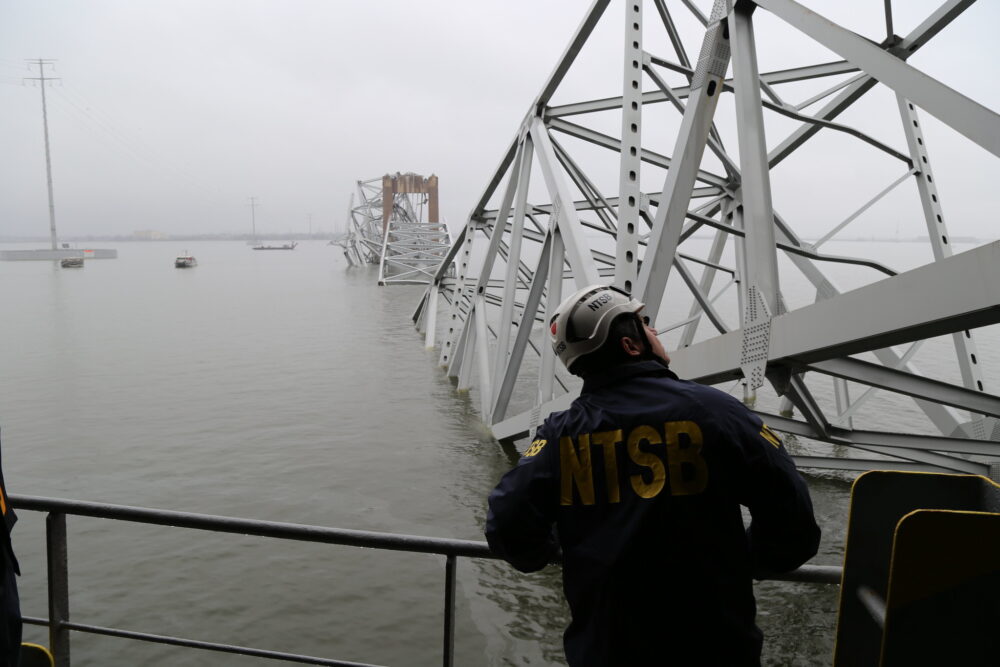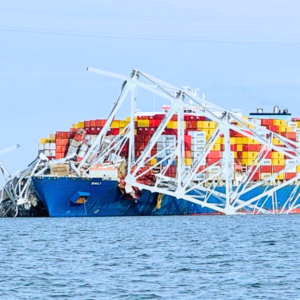Baltimore Key Bridge Collapse Lawsuits Expected to be Wide-Ranging and Complex
Lawsuits over the Baltimore bridge collapse could result in more than $3 billion in legal liability for the owners and operators of the Dali, as well as other entities responsible for the tragedy.

On Tuesday, March 26, just before 1:30 A.M., the container ship MV Dali collided with a support on the Francis Scott Key bridge in Baltimore, causing it to instantly collapse. This was a “mass casualty event,” and has also shut down one of the largest deep-water ports on the eastern U.S. seaboard, which is expected to lead to a wide-range of entities facing legal liability through Baltimore bridge collapse lawsuits.
The National Transportation Safety Board (NTSB) has announced it is investigating the Key bridge collapse, to determine how it happened, who is at fault and how similar incidents can be avoided in the future. This will also have an impact on the various entities that will be named in lawsuits over the Baltimore Key bridge collapse, which are likely to face billions in legal liability for both personal injuries, property damage and business disruption claims.
According to the NTSB’s preliminary information, the 948-foot-long Singapore-registered cargo vessel was fully loaded when it rammed the bridge, while leaving the Port of Baltimore; one of only four ports on the east coast of the U.S. able to handle ships of its size. The ship reportedly lost power and drifted into the bridge, causing most of the structure to fall into the Patapsco River.
While the crew was able to send out a Mayday warning to authorities just minutes before the crash, resulting in bridge traffic being shut down, eight construction workers filling potholes on the bridge at the time fell into the water when it collapsed. Two of the men were rescued, but four others are presumed dead and still trapped somewhere under the mangled metal and powerful current. Two other workers’ bodies were recovered earlier this week.

Do You Have A Case?
Lawyers are reviewing Baltimore Key Bridge Collapse lawsuits for individuals who were injured or impacted by the collapse of the Francis Scott Key Bridge.
Learn More About this Lawsuit SEE IF YOU QUALIFY FOR COMPENSATION“This accident was classified by the US Coast Guard as a major marine casualty,” the NTSB indicated in its press release. “NTSB will lead the investigation, and the Office of Marine Safety will investigate and establish probable cause.”
Multiple Lawsuits Over Baltimore Bridge Collapse Expected
Experts are already predicting the ship’s owner, Grace Ocean, could face massive liability lawsuits in the near future, potentially putting the Singapore company on the line for hundreds of millions of dollars in damages. The ship is managed and operated by Synergy Marine, and was being chartered to the shipping company A.P. Moller-Maersk A/S, which is unlikely to face much liability exposure.
However, Grace Ocean and Synergy Marine could face wrongful death lawsuits from the families of the lost construction workers, and economic damages from a myriad of sources, as the loss of the bridge is expected to have massive impacts on international shipping and supply chains worldwide. The loss of the bridge is also expected to negatively affect local jobs and businesses, not to mention the catastrophic damage to the bridge itself, which is now utterly destroyed.
Analysts from Barclays PLC also note that the company’s insurers may be hit hard in litigation, potentially facing claims of between $1.2 and $3 billion.
However, the company and its insurers could have some protection from an 1851 law which limits liability for shipping accidents to the cost of the ship and its cargo. The law is commonly known as the “Titanic Law” due to its use to limit liability after the famous maritime disaster.
As the investigation unfolds, it is expected that a number of other entities will also bear responsibility for the crash, either directly or from a failure to take steps that could have avoided the tragedy.
Dali’s History of Problems
Early indications suggest that the Baltimore Key bridge collapsed was the direct result of a loss of power in the cargo ship, which left the crew and pilots unable to stop the vessel from striking the bridge, even though they had dropped anchor.
However, it is not the first time the ship has been linked to incidents and control problems. According to a report by Bloomberg News, the Dali was linked to an accident in Antwerp in 2016, when it crashed into a stone wall berth just a year after the ship was commissioned and put to sea.
It was sold to Grace Ocean after the incident. However, in June 2023, inspectors in Chile warned of problems with the Dali’s propulsion system, but the container ship was allowed to keep operating. An inspection by the U.S. Coast Guard late last year found no deficiencies.
On Wednesday, NTSB officials indicated the ship was carrying hazardous materials, some of which spilled into the river. However, the board has not issued any hazardous materials warnings in relation to the incident.
The investigation, cleanup of the debris, re-opening of the Port of Baltimore, and construction of a new bridge, which was a major artery for traffic in that region, are expected to take some time. However, the Biden Administration, as well as state and local authorities, have vowed to address the problems as soon as possible.
Want a weekly update on top lawsuits, recalls & warnings?
"*" indicates required fields






0 Comments